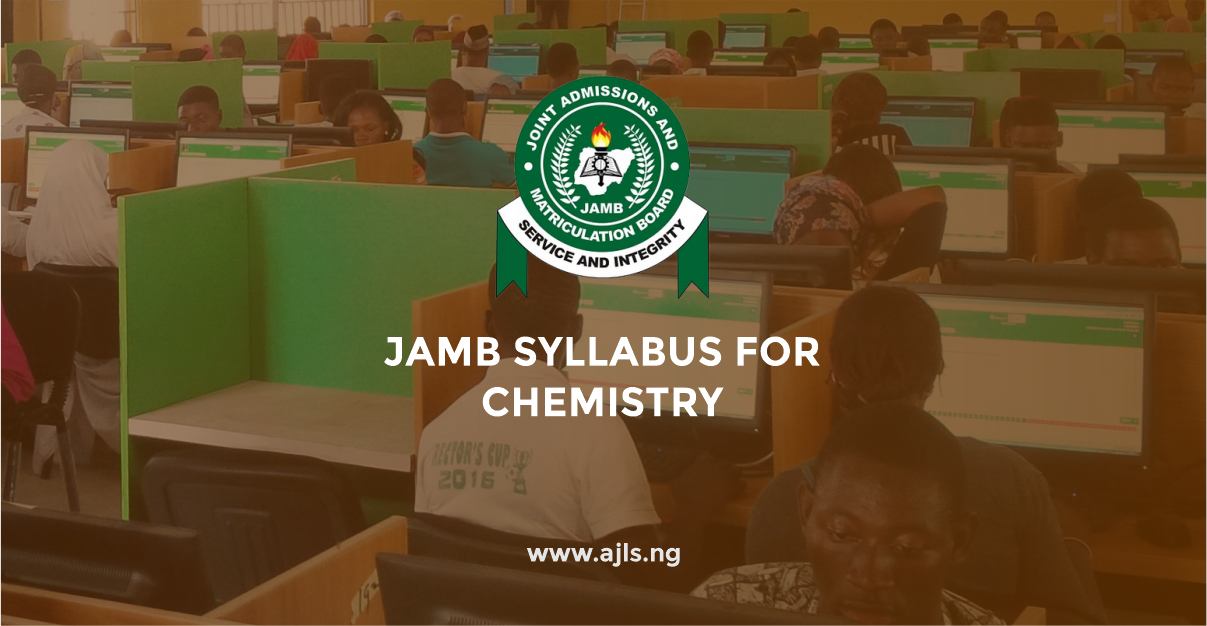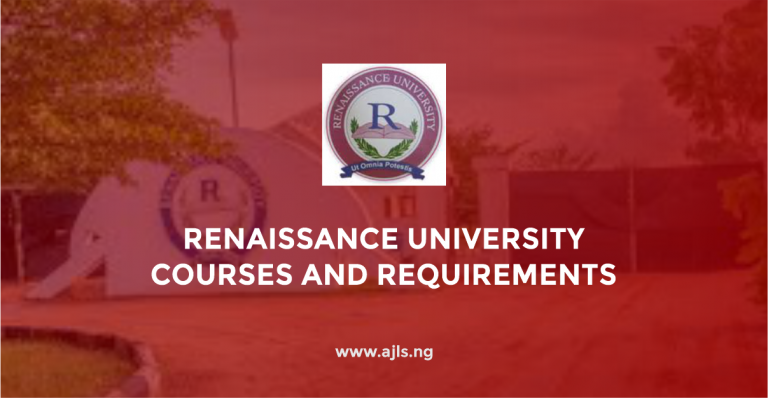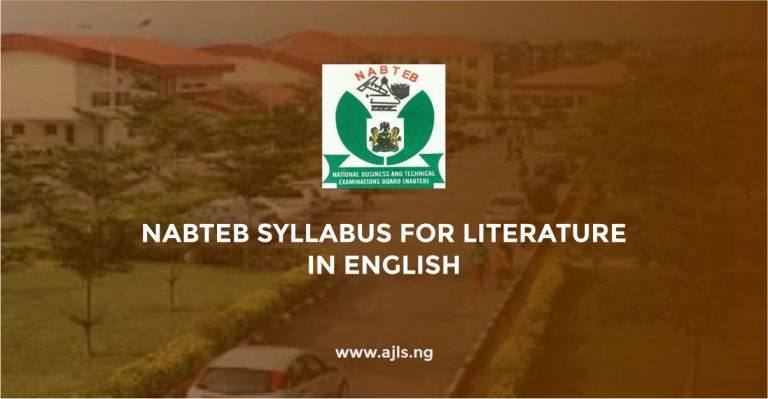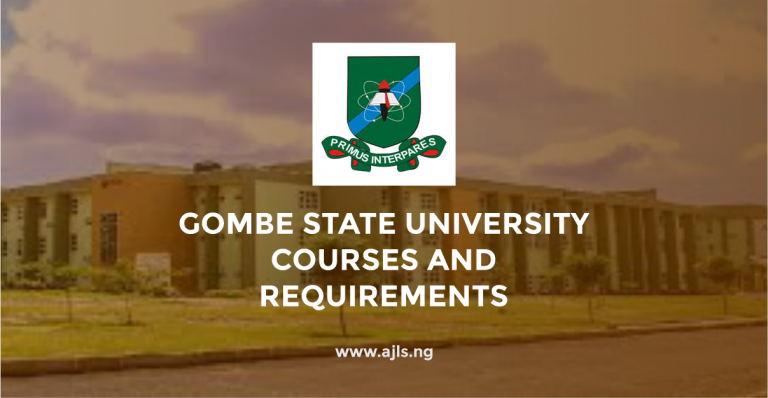JAMB Syllabus for Chemistry 2025

For students seeking admission into any university of their choice, one of the major criterion for admission is passing the Joint Admission Matriculation Board (JAMB) exams.
The JAMB exams are set by the Joint Admissions and Matriculation Board (JAMB), a Nigerian government agency. They are responsible for organizing and overseeing the Unified Tertiary Matriculation Examination (UTME) for students seeking admission into universities, polytechnics, and other higher education institutions in Nigeria.
This examination body has just released a complete syllabus for science students hoping to sit the subject Chemistry in the upcoming JAMB. To perform well in the Chemistry section of the exam, students must have a thorough understanding of the JAMB Chemistry syllabus.
The JAMB Syllabus for Chemistry serves as a guide, outlining the topics to study, the depth of knowledge required, and how to prepare effectively for the exam.
This guide is here to give you a breakdown of everything you need to know about JAMB Syllabus for Chemistry and how to prepare for this upcoming examination.
JAMB Syllabus for Chemistry
The JAMB Chemistry syllabus is designed to test students’ knowledge of various concepts in chemistry, ranging from fundamental principles to complex applications. It covers topics from the senior secondary school chemistry curriculum, divided into broad sections that reflect the fundamental areas of the subject.
Key Areas in the JAMB Chemistry Syllabus
Separation of Mixtures and Purification of Chemical Substances
(a) Pure vs. Impure Substances
(b) Boiling and Melting Points
(c) Elements, Compounds, and Mixtures
(d) Chemical and Physical Changes
(e) Separation Methods:
– Evaporation, simple and fractional distillation
– Sublimation, filtration, crystallization, paper and column chromatography
– Simple and fractional crystallization, magnetization, decantation
Candidates should be able to:
(i) Differentiate between pure and impure substances;
(ii) Use boiling and melting points to determine the purity of chemical substances;
(iii) Distinguish between elements, compounds, and mixtures;
(iv) Identify chemical and physical changes;
(v) Recognize the properties of the components in a mixture;
(vi) Specify the principles behind each separation method;
(vii) Apply the basic principles of separation processes in everyday life.
Chemical Combination
Laws of definite, multiple, and reciprocal proportions; law of conservation of matter; Gay-Lussac’s law of combining volumes; Avogadro’s law; chemical symbols, formulae, equations, and their uses; relative atomic mass based on 12C=12, the mole concept, Avogadro’s number, and stoichiometry of reactions.
Candidates should be able to:
(i) Perform basic calculations involving formulae, equations, chemical composition, and the mole concept;
(ii) Derive chemical laws from given expressions, statements, or data;
(iii) Interpret graphs related to these laws;
(iv) Calculate the stoichiometry of chemical reactions.
Kinetic Theory of Matter and Gas Laws
(a) Phenomena supporting the kinetic theory of matter through:
(i) Melting
(ii) Vapourization
(iii) Boiling
(iv) Freezing
(v) Condensation
Explained in terms of molecular motion and Brownian movement.
(b) (i) Boyle’s, Charles’s, Graham’s, and Dalton’s laws (law of partial pressure); combined gas law, molar volume, and atomicity of gases.
(ii) The ideal gas equation (PV = nRT).
(iii) The relationship between vapour density and relative molecular mass of gases.
Candidates should be able to:
(i) Apply the kinetic theory to distinguish between solids, liquids, and gases;
(ii) Explain the reasons for changes in states;
(iii) Draw inferences based on molecular motion;
(iv) Derive gas laws from given statements;
(v) Interpret graphs related to these laws;
(vi) Perform simple calculations based on these laws and equations.
Atomic Structure and Bonding
(a) (i) The concept of atoms, molecules, and ions, with contributions from Dalton, Millikan, Rutherford, Moseley, Thompson, and Bohr.
(ii) Atomic structure, electron configuration, atomic number, mass number, and isotopes; examples from elements with atomic numbers 1–20.
(iii) Shapes of s and p orbitals.
(b) The periodic table and periodicity of elements, understanding groups such as alkali metals, halogens, noble gases, and transition metals, and how ionization energy, ionic radii, electron affinity, and electronegativity vary.
(c) Chemical bonding: Electrovalency, covalency, and the electron configuration of elements and their tendency to attain noble gas structure. Types of bonding like hydrogen bonding, metallic bonding, and coordinate bonding (e.g., [Fe(CN)6]3-, [Cu(NH3)4]2+). Van der Waals’ forces are also mentioned as a unique bonding force.
(d) Shapes of simple molecules: Linear (H2, O2, C12, HCl, CO2), non-linear (H2O), tetrahedral (CH4), pyramidal (NH3).
(e) Nuclear Chemistry:
(i) Radioactivity – Types and properties of radiation
(ii) Nuclear reactions – Basic equations, uses, and applications of natural and artificial radioactivity.
Candidates should be able to:
(i) Differentiate between atoms, molecules, and ions;
(ii) Identify the contributions of key scientists to atomic structure development;
(iii) Calculate protons, neutrons, and electrons from atomic and mass numbers;
(iv) Apply electron arrangement rules;
(v) Identify common isotopic elements;
(vi) Relate isotopy to mass number;
(vii) Perform basic isotopy-related calculations;
(viii) Differentiate between orbital shapes;
(ix) Identify the number of electrons in s and p orbitals;
(x) Relate atomic number to element position on the periodic table;
(xi) Recognize property variations across groups and periods;
(xii) Distinguish between bond types;
(xiii) Determine bond types based on electron configurations;
(xiv) Relate bonding to compound properties;
(xv) Identify different molecular shapes;
(xvi) Differentiate between chemical and nuclear reactions;
(xvii) Distinguish between natural and artificial radioactivity;
(xviii) Compare properties of different nuclear radiation types;
(xix) Calculate the half-life of radioactive materials;
(xx) Balance simple nuclear equations;
(xxi) Understand applications of radioactivity.
How to Prepare for the JAMB Chemistry Examination
- The first step to success is familiarizing yourself with the entire syllabus. Focus on each topic and ensure you understand both theoretical concepts and practical applications.
- Reviewing past JAMB Chemistry questions is an excellent way to understand the exam format and identify frequently tested areas.
- Utilize textbooks and resources that cover the JAMB Chemistry syllabus comprehensively.
Popular ones include “Chemistry: A Course for Senior Secondary Schools” by O.O. Akinmoladun and “Chemistry for Secondary Schools” by J.B. Umeh.
Chemistry involves solving problems and equations. Practicing calculations, balancing reactions, and applying concepts to real-life scenarios will sharpen your skills.
Sometimes, the syllabus may have minor adjustments. Always check for the latest updates on the official JAMB website to avoid studying outdated materials.
Conclusion
The JAMB Chemistry syllabus provides a roadmap for success in the exam. By thoroughly understanding each topic, practicing consistently, and staying focused, students can achieve excellent results.
Remember, consistency, and a well-structured study plan are key to mastering the JAMB Chemistry syllabus. We hope this is insightful enough. If you have any questions regarding this content, please let us know via the comment section below and we will reply.





